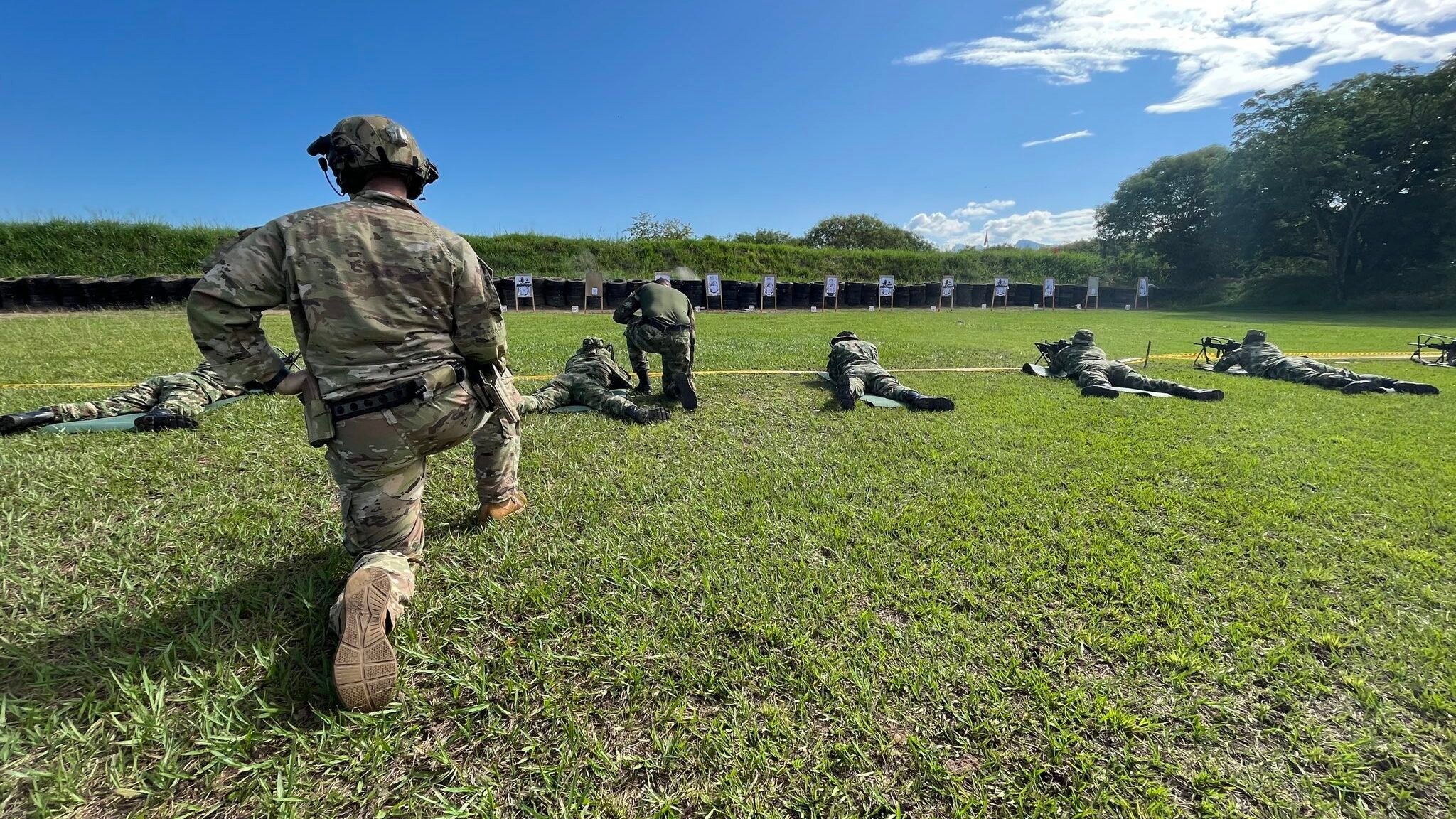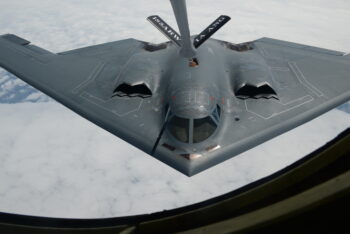
A U.S. Army advisor assigned to 1st Security Force Assistance Brigade observes a Colombian Army range in Colombia, April 2023. Advisors are employed in the country building interoperability with security force counterparts. (DVIDS)
WASHINGTON — One of the Pentagon’s largest international security cooperation programs is experiencing “persistent issues” meeting delivery timelines, while some projects have altogether “failed” to provide reliable and suitable capabilities, according to a government watchdog office.
Between fiscal 2018 and 2022, the Department of Defense (DoD) allocated $5.6 billion for Section 333 projects that involve the US providing training and equipment to at least 90 partner nations nations to help with everything from counternarcotics operations to border security to simple construction projects, according to a new pair of Government Accountability Office (GAO) reports published on Tuesday. From that period, roughly 75 percent of the projects were “delayed when compared to DoD’s projected timeline submitted to Congress.
“Specifically, 82 percent of equipment deliveries, 68 percent of training deliveries, 72 percent of services deliveries, and 95 percent of small-scale construction deliveries were delayed,” the office wrote. “Of equipment deliveries that were delayed and later completed during 2018 through 2022, nearly 55 percent were completed at least one year after the estimated delivery date.”
Delivery timelines aside, GAO set out to analyze projects’ effectiveness and used department records to do a deep dive on six that took place in Colombia, Jordan, Kosovo, Oman and Tajikistan. All six included equipment, while four included training, two involved providing services, and one involved a “small-scale” road paving project. The results were mixed.
“Four of the six projects were successful in improving the partner nations’ capabilities to conduct border security, counterterrorism, and counter-illicit drug trafficking operations,” the GAO wrote. “For example, one evaluation concluded that Humvees provided to a country’s security forces strengthened their capability to traverse difficult terrain and transport equipment and thus to respond to crises and secure the border.”
Another project centered around supporting a helicopter training center, and the GAO found that it did improve an air force training squadron’s ability to conduct flight, aircrew, and maintenance training.
That was the good news. DoD evaluation also found that two of the six Section 333 projects “failed” to improve partner forces’ capabilities because of “unsuitable or unreliable equipment,” the GAO concluded.
One $7.6 million project included providing a partner nation with a ground sensor system for its border forces to use. However, the system was “not well suited” for the environment and “was not reliable.”
“The system functioned for approximately three months before becoming inoperative because of factors such as insufficient battery life, damage to ground wiring by local fauna, and sensor failures in extreme temperatures,” the government watchdog added.
The second failed project of the bunch received $12 million and centered around the US providing a partner nation with what the GAO said were unreliable mobile border security-system trailers.
“From 2019 through 2022, the trailers were operational for a total of approximately three months, according to the evaluation,” the GAO wrote. “The trailers were nonfunctional for extended periods, primarily because of problems with the electrical generators. The evaluation also noted that two of the trailers sustained damage in shipping and required extensive repairs. In addition, partner nation maintenance personnel were unable to independently maintain and repair the trailers.”
In addition to project delays and questions about adequate and working equipment, the office found fundamental flaws with how the DoD and State Department work together and approach Section 333 projects. For example, it cited DoD’s “longstanding gaps” with project planning.
“Most of the Section 333 project proposals GAO reviewed lacked one or more key planning elements critical to project success,” the office wrote. “For example, 42 of 46 proposals did not fully document a plan for project sustainment, an analysis of the partner nation’s absorptive capacity, or measurable objectives.”
The State Department, meanwhile, experienced “inconsistent involvement” with the projects because there isn’t a joint DOD–State planning process and there is insufficient training.
“DOD has not worked with State to define a joint process, including timelines for State’s review, which has hindered State’s ability to contribute expertise,” the GAO wrote. “For example, State officials told GAO there is pressure to concur on projects quickly, without sufficient time for review. As a result, projects may have negative outcomes, such as assistance that cannot be used.”
Both reports — one titled “DoD Should Assess Delivery Delays in Train and Equip Projects and Improve Evaluations”, and the other titled “DoD and State Should Strengthen Planning for Train and Equip Projects” — the GAO provided the Pentagon with eight recommendations and the State Department with two. All 10 recommendations remain open points, but both departments either agree or concur with all suggestions. That list recommendation list includes:
- The Secretary of Defense should ensure that the Defense Security Cooperation Agency director works with implementing agencies to identify and analyze reasons for the delivery delays;
- DSCA should take steps to improve the quality of Section 333 project evaluations to better align with international best practices;
- The Secretary of Defense should work with the Secretary of State to define and document, such as through a memorandum of understanding, a joint process that specifies when and how State should be involved in the planning of Section 333 projects; and more.
‘Technocrat’ Manele takes reins as Solomon Islands PM, China tilt remains
Still, Jeremiah Manele signaled he may take a more balanced approach to the East-West power struggle, recently saying it’s “important to treat every and all of our partners as equals.”


























